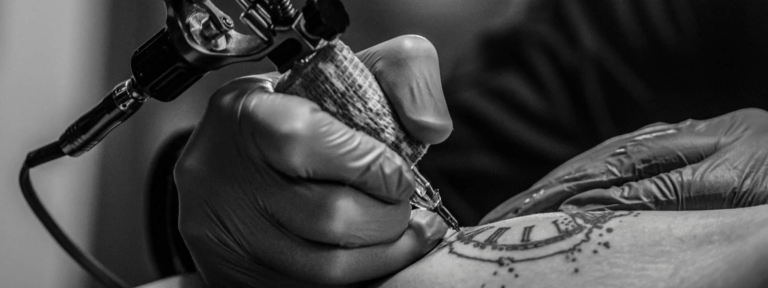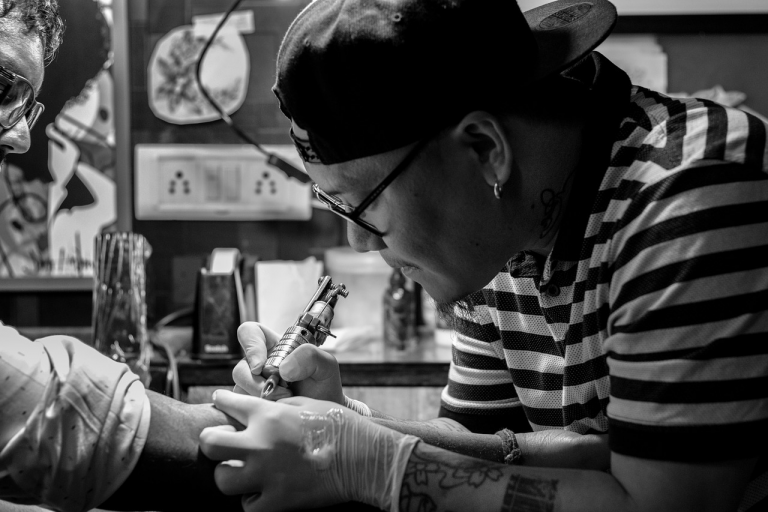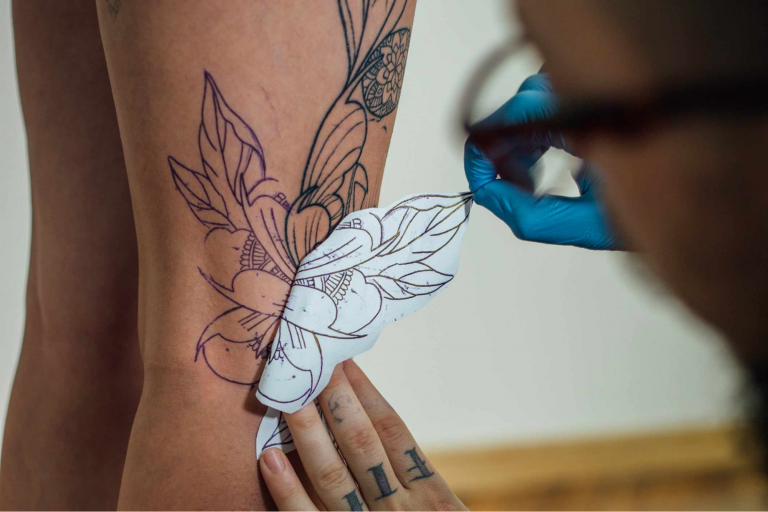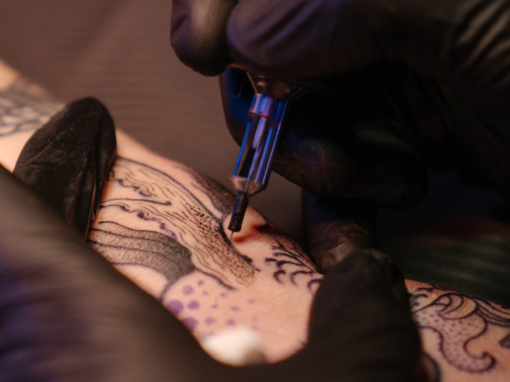After you get the tattoo, the skin starts to peel off. However, some peeling in the early stages of healing is completely normal. The tattooing process creates a wound on your skin, and exfoliation is your body’s way of getting rid of dry skin cells that have been affected as your skin heals.
However, excessive peeling after tattooing may indicate otherwise, especially if you see signs of infection or inflammation.
In this article, we will tell you which peel is “normal” and when the peeling of the skin can be a sign of a problem. We also looked at what needs to be done to make the tattoo heal better and faster, and what to avoid.
What Is Tattoo Peeling?
Your new tattoo starts with an open wound. During the procedure, the needles of the tattoo machines pierce the skin about 1000 times every minute. And, as a result, the entire area of the skin where the tattoo is located — an open wound.
The body of any person has the property of self-healing. That is, an open wound will be covered with a protective layer of hardened skin. A healthy layer of skin will be restored under this layer. And when it reaches its normal state, the protective layer will recede — a kind of “molting” will begin. This is the reason why the tattoo peels off.
Essentially, a tattoo peel is a layer of the epidermis of your skin that undergoes strong exfoliation.
Peeling is what your skin naturally does every day, getting rid of millions of dead skin cells. You usually don’t notice that your body is doing this because the level of peeling is very low.
However, when you get a tattoo, it becomes almost impossible to ignore this process. Unlike regular exfoliation, the skin flakes will be significantly larger and contain tattoo ink. This can be alarming, of course, but there is usually nothing to worry about. Fortunately, most of the tattoo ink will be firmly embedded deep under the dermis. Some tattoo peeling is inevitable, you should soften it as much as possible to avoid distorting the tattoo.
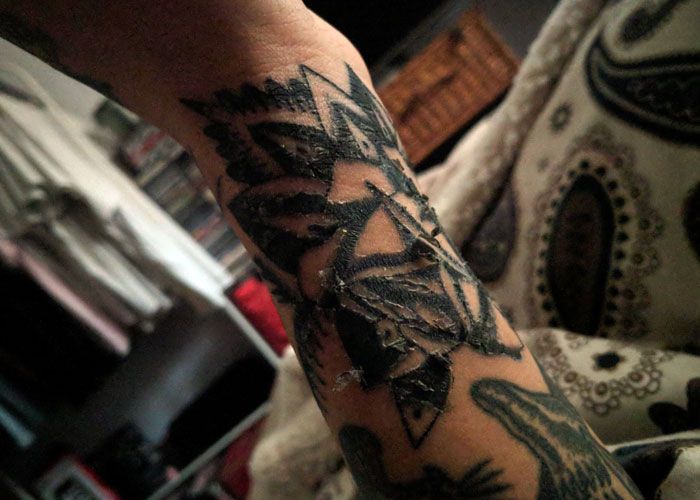
When Does Tattoo Peeling Start and How Long Does It Last?
On average, new tattoos begin to peel off by about 4-5 days. It depends on the person. Some may experience peeling as early as the second day, others after about a week. Once the peeling begins, it usually goes away within a week or two. There are many reasons why some tattoos will peel off earlier than others. These include the location of the tattoo, size, color, saturation, and the depth of penetration of the needles into the skin.
In addition, whether the tattoo has been covered with wound care (for example, Saniderm), whether the aftercare is being used, and which agent is used can determine the timing and frequency of the tattoo peeling off.
Areas prone to rubbing and bending, such as fingers or elbows, are more likely to take longer to peel. Exfoliation occurs much less frequently in these areas as the skin is naturally able to withstand more wear and tear. Regular tattoo peeling can last from 2 days to 1 month.
What Are the Do’s and Don’Ts While Caring for a Peeling Tattoo
Proper follow-up care is critical to the overall healing process of the tattoo.
Do: Wear Loose Clothing
Tight clothing can chafe and pull on the tattoo, potentially tearing the skin off prematurely. Ideally, you should wear loose and comfortable clothing throughout the tattoo peeling process.
Do: Keep Your Tattoo Clean
Tattoo cleaning is an important part of the tattoo healing process. Regular cleansing will help get rid of dirt, plasma, blood, or oil that can clog your skin pores. To help your skin heal faster, make sure your tattoo is clean and breathable. Also, make sure you wear clean clothes and fresh towels and sheets.
Do: Keep Your Tattoo Moist
Moisturizing a peeling tattoo will speed up your tattoo’s healing process, nourish your skin and relieve the annoying itchiness that occurs when your skin is peeling.
Oil-based products should be avoided as they are known to clog pores. Instead, opt for a mild and gentle skincare product formulated specifically for tattoos (such as Sanibalm).

Don’t: Pull Out Flakes
As tempting as it may be to remove dead skin that is sticking, DON’T DO IT! The scabs are most likely attached to healthy skin, and if removed prematurely, the wound may open up and bleed again.
Don’t: Itch, Scratch, or Rub the Peeling Tattoo
While your hands may seem clean, your nails are a great hiding place for bacteria. Rubbing or scratching can transfer bacteria from the nails to the open wound, which can lead to infection. In addition, scabs can peel off prematurely, thereby damaging the tattoo design.
Don’t: Immerse the Tattoo in Water for a Long Time
Whether you are using a tattoo bandage or not, you should avoid immersing the tattoo in any liquid for at least a few weeks.
Water can seep into the tattoo and remove ink from the tattoo while it is still healing. And water left in your tattoo for a long time can also contain bacteria, dirt, or germs that can lead to infection.
Don’t: Direct Sunlight on the Tattoo
When it comes to tattoo healing, the best strategy is to simply avoid the sun.
Exposure to sunlight during this process can shock the skin cells and prolong or even renew the healing process. Blisters can develop on your skin, potentially leading to infection.
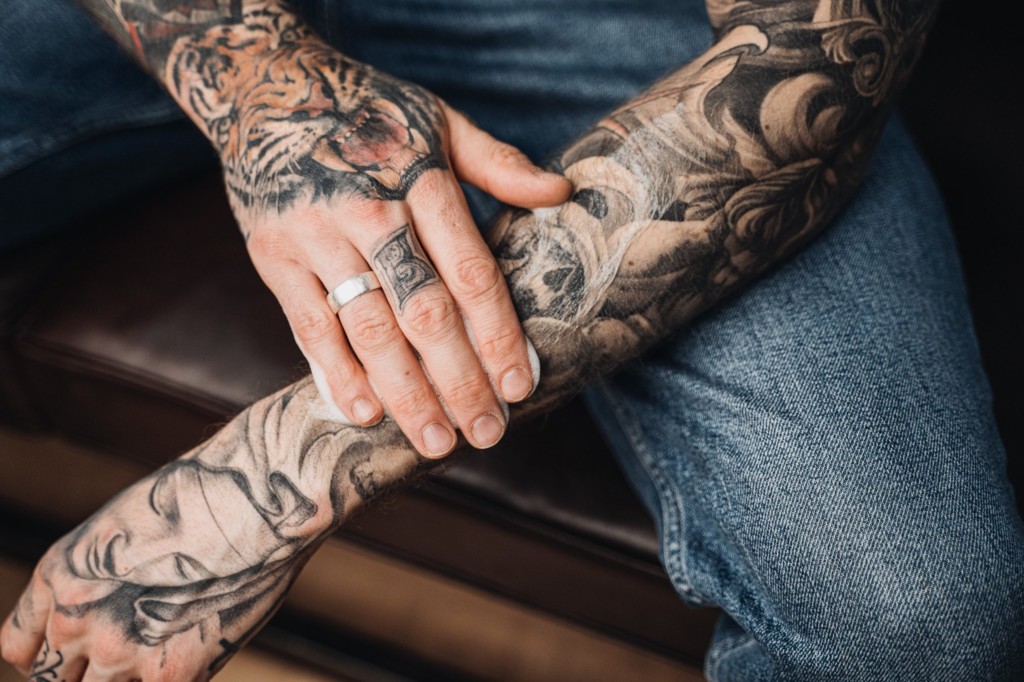
Signs That a Tattoo Isn’t Healing Correctly
While peeling is a normal part of tattoo healing, some signs could indicate your new ink is not healing properly.
1. Rashes
Red spots on the skin may indicate an allergic reaction to tattoo ink.
If you have an inflammatory skin condition, getting a tattoo can also exacerbate your condition, which often looks like red spots. These skin conditions include:
- Rosacea;
- Eczema;
- Psoriasis.
2. Excessive itching
While some itching is expected from a healing tattoo, excessive itching is not. This could be a sign of:
- Infection;
- Allergic reaction;
- Inflammation.
Try not to scratch this area. Scratches can aggravate the situation and even distort fresh ink.
3. Fluid secretion
Any inflammation accompanied by fluid secretion can be a sign of infection. See your doctor right away if these symptoms are accompanied by a high fever and chills.
4. Scars
Scars are a sign that the tattoo has not healed properly. You may need to consult a dermatologist for advice on how to get rid of scars while keeping as many tattoos as possible.
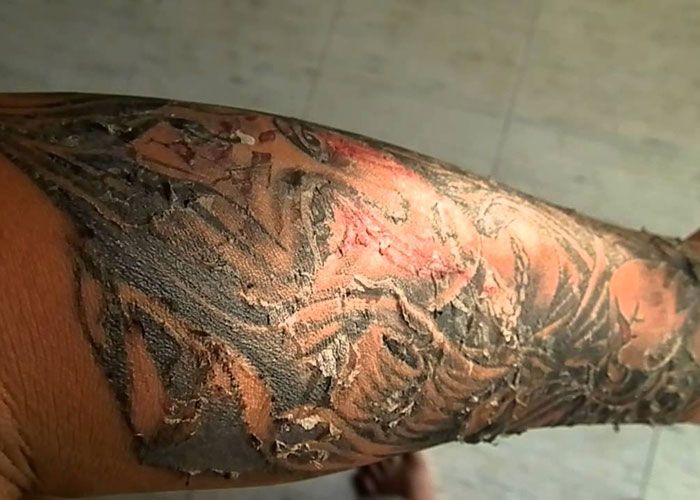
Summary
When it comes to peeling a tattoo, it is best to keep it clean and moisturized. The last thing your tattoo needs to do is touch your hands into it and tear off the skin. Support follow-up care, but allow the skin to heal on its own.
In general, the tattoo should heal within a few weeks. After this time, you should not see peeling, swelling, or redness.
However, if peeling or other symptoms last longer than a month or two, seek the advice of a dermatologist.
FAQ
⏳ When Does a Tattoo Start to Peel Off?
During the first two days, your skin will feel irritated because the skin on which the tattoo is located is still very fresh. But after a couple of days, it should begin to shrink and dry, and after about two to three days after application, you will see the peeling process begin. This process will be indicated by itching, flaking, and crusting.
🤔 What if the Tattoo Won’t Peel Off?
A tattoo that doesn’t flake off is not necessarily a sign that something is wrong with it. Everyone’s skin heals differently, so you may see peeling later or not much crusting. Do not induce peeling by scratching the skin yourself. This can lead to complications including infection and scarring.
❓ Old Tattoos Are Peeling Off — Is This Normal?
Old tattoos do not usually flake off, so if you have this it is best to call your dermatologist and make an appointment as soon as possible. You may develop an allergic reaction to tattoo ink, which is more common with non-black tattoos, or a dermatological condition.
🔎 Do Tattoos Fade After Peeling Off?
If the tattoo is applied correctly and everything goes smoothly during the healing process, you will not see significant fading. One exception: thin line tattoos. Due to the nature of tattoos with this design, they may require retouching (most artists offer free retouching for some time).

